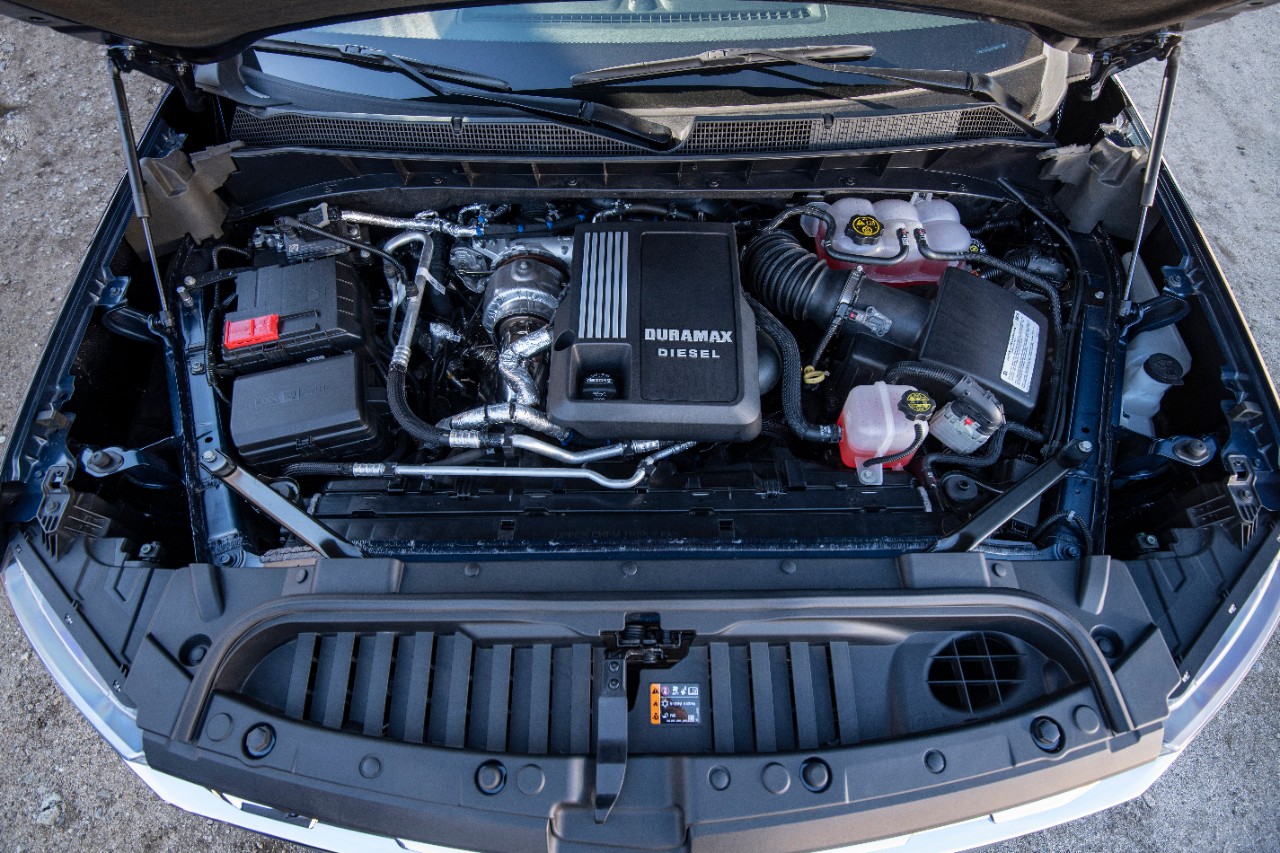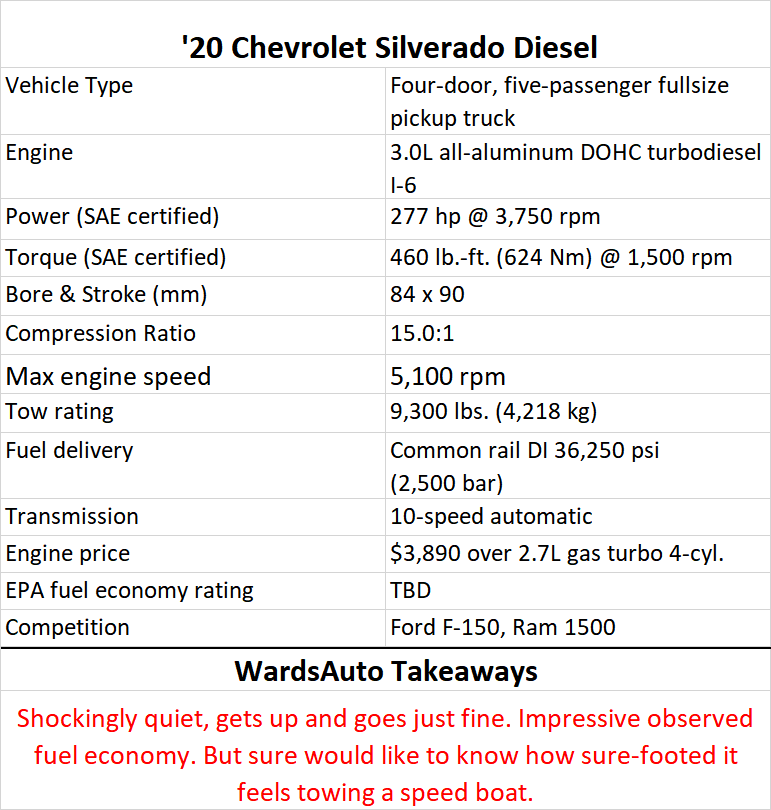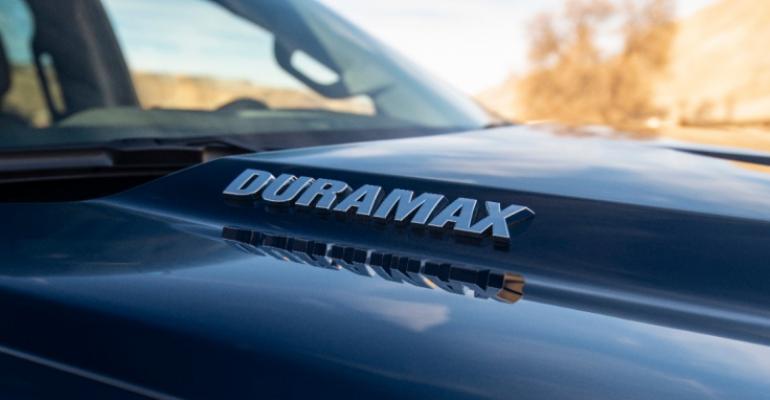BEND, OR – Everyone likes a good race. When multiple well-qualified contenders come to the starting line with a legitimate chance to win, spectators look forward to the ensuing drama and entertainment.
For truck enthusiasts, this fall promises a lively shootout as all three Detroit automakers – for the first time ever – will be offering light-duty 6-cyl. diesel engines that are perfectly suited for quiet, comfortable cruising and long-haul towing.
The engines from Fiat Chrysler, Ford and General Motors – all displacing 3.0L – will square up during testing for the 2020 Wards 10 Best Engines & Propulsion Systems competition this fall.
Ford has a head start, as its Power Stroke diesel launched last year in the F-150 and earned a spot on the 2019 list. FCA’s EcoDiesel earned three trophies starting in 2014, and its next-generation 3.0L goes on sale this fall in the Ram 1500.
Filling out the field is GM’s long-awaited Duramax inline 6-cyl. diesel, which arrives this fall in the ’20 Silverado and GMC Sierra.
After test drives here in the Silverado, we can confirm the new light-duty Duramax assembled in Flint, MI, is virtually clatter-free and primed for a U.S. market in love with pickups.
Those truck shoppers seem to have a “bigger is better” mentality, which means the efficiency gains inherent with diesel engines would go a long way in reducing tailpipe emissions and saving money at the pump.
For years, fullsize truck buyers opted for gasoline V-8s, and they’d be lucky to top 20 mpg (11.8 L/100 km) during routine driving. The bigger the load and the heavier the trailer, the worse the observed fuel economy.

Gasoline V-6s have become popular in recent years with some of these fullsize truck buyers, but observed fuel economy often still hovers in the mid-20s.
So along comes the new generation of light-duty diesels, powered with more energy-dense fuel than gasoline and capable of some truly remarkable fuel economy, while delivering V-8 levels of torque.
At Chevy’s recent 3.0L Duramax event here, journalists were encouraged to hyper-mile their way to the greatest efficiency in near-production ’20 Silverados, unladen. A number of journalists allegedly broached 45 mpg (5.2 L/100 km) puttering on a relatively flat, uncongested 26-mile (42-km) loop.
One can speculate how to achieve such results in a vehicle with poor aerodynamics weighing 2.5 tons and benefiting from no other electrification besides stop/start. This light-footed editor was pleased to see 33.9 mpg (6.9 L/100 km) on the same route and did not suffer the horn of scorn from impatient locals (see photo below).
For comparison, some Wards editors topped 26 mpg (9.0 L/100 km) while driving nearly 800 miles last fall in a Ford F-150 equipped with the Power Stroke 3.0L diesel V-6.
In routine driving, the Silverado with its light-duty Duramax stacks up nicely to the F-150 Power Stroke. Both engines are surprisingly quiet – especially for ears familiar with the cantankerous mills of the 1980s – and they rev without fuss when called upon.
Among the three light-duty diesels, the Duramax I-6 wins the horsepower race, with 277 hp at 3,750 rpm. For sheer gruntability, the Duramax, with its 460 lb.-ft. (624 Nm) of torque at 1,500 rpm, comes in second to the upcoming Ram EcoDiesel’s 480 lb.-ft. (651 Nm) at 1,600 rpm.
Sorely lacking in the Silverado test drive was the ability to tow. Chevy had assembled multiple trailers of various weights for a two-day event that included towing with the new heavy-duty pickups, but inexplicably none of the flat-beds or box trailers was ever hitched to the light-duty Duramax 3.0L for media testing.

The Duramax, available in LT, RST, LTZ and High Country trim, is rated to pull 9,300 lbs. (4,218 kg), which meets 90% of towing demands in the segment, GM engineers say. Meanwhile, Ford says its Power Stroke 3.0L can pull up to 11,400 lbs. (5,171 kg), and FCA claims the new Ram EcoDiesel arriving this fall can tug 12,560 lbs. (5,697 kg).
These numbers mean something to truck buyers who own boats, campers, jet skis, dirt bikes, snowmobiles and landscaping companies. With growing popularity of three-row utility vehicles, the ability to pull something truly is the only good reason these days to purchase a body-on-frame pickup truck.
The confidence to haul this much doesn’t come cheap. On upper F-150 trim levels, the Ford 3.0L Power Stroke costs an extra $3,000 over the 5.0L gasoline V-8 and $2,400 more than the 3.5L EcoBoost V-6.
Meanwhile, the 3.0L Duramax carries a $3,890 premium over the Silverado’s 2.7L turbocharged gasoline 4-cyl. and a $2,495 premium over the 5.3L small-block gasoline V-8.
Incidentally, the 5.3L gas V-8 was found under the hood of 84.9% of model-year ’18 Silverados sold in the U.S., according to Wards Intelligence data.

The 3.0L Duramax is priced the same as the 6.2L gasoline V-8 that represents the flagship powertrain for the Silverado.
On the payload front, the Duramax 3.0L is rated at 1,870 lbs. (848 kg), slightly behind the Power Stroke’s 1,940 lbs. (880 kg).
Scheming Volkswagen engineers may have given Rudolf Diesel a black eye, but there’s no arguing the merits of compression-ignition engines as workhorses in commercial vehicles, tractors, heavy equipment and pickup trucks of all sizes and capabilities.
Stay tuned as Wards editors put all three Detroit diesels through the paces this fall for Wards 10 Best Engines & Propulsion Systems testing. We’ll announce winners in December.






